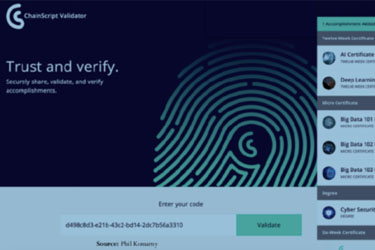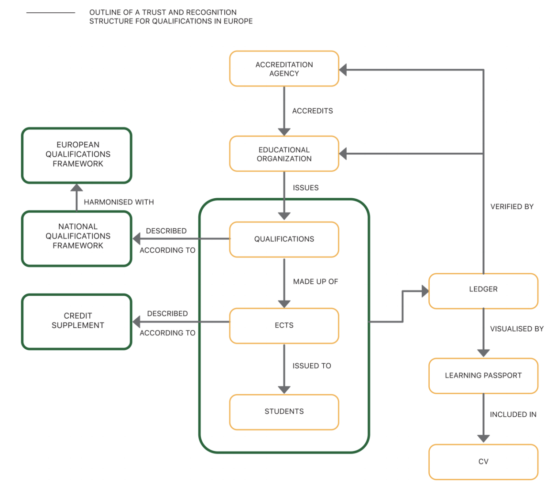Blockchain: Is it Good for Education?

Many have written about the possible applications of blockchain in education. Trying to understand the capabilities of blockchain and how it works is like trying to understand the potential of the Internet by looking at Mosaic. That is a good analogy made by Oral Roberts University CIO, Mike Mathews.
Blockchain is very complicated to understand, especially for the non-technical person. There are too many possible applications to cover in a short blog. Let’s explore it by looking at academic credentials in blockchain.
You can dig deeper with Mike Mathews, Donald Clark, Anthony Camilleri, or an in-depth publication I will reference later. Hopefully, this blog will give a basic understanding and inspire you to explore more.
What is Blockchain?
Blockchain is a public ledger type database made up of records called blocks that are linked together like a chain. It is a shared unchallengeable ledger for recording the history of transactions.Here, the ledger records the history of academic accomplishments. An education ledger (blockchain) could store academic information such as degrees, diplomas, tests etc. It could be kind of digital transcript.
A Few Potential Applications of Blockchain
- Learning Credentials Repository – A blockchain database of credentials and achievements can be a secure online repository. Digitized records/blocks replace paper copies for sharing proof of learning and can be easily accessible and tracked. Blockchain can make it easy to access all of your academic accomplishments in a digitized and ultra-secure way. Each record is a block. Your records would be chained together and new credentials will be added as you go throughout your lifetime of learning.
- Lifelong Learning Building Blocks – Informal learning activities could be captured, validated and stored in addition to formal learning accomplishments. This can be as simple as noting a watched video or completed online lesson. We’re already seeing some universities using blockchain with badges, credits, and qualifications.
- Authenticating Credentials – Institutions, recruiting firms or employers can easily access and verify credentials. No more gathering of papers or trying to digitize to share. Blocks are digital “learning” records and come in multilingual format eliminating the painstaking task of translation.
What’s more, with diploma mills and fake credentials causing havoc for institutions and employers, blockchain solves the issue by providing protection from fraud. It has two-step authentication and spreads blocks across numerous computer nodes. It would take hitting over 51% of computers to falsify a block.
Sony and IBM have partnered and filed patents to develop a blockchain educational platform that can house student data, their performance reports and other information related to their academic records. Some universities have created their own platforms.
MIT and Learning Machine built an ecosystem for creating, sharing, and verifying blockchain-based educational certificates. All code is open-source. The University of Nicosia (UNIC) has been issuing academic certificates in blockchain since 2014 using their own in-house software platform.
Informative Resource on Blockchain in Education
The Joint Research Centre (JRC), the European Commission’s science and knowledge service, released a 136-page publication on Blockchain in Education. Authors, Alexander Grech and Anthony F. Camilleri point out potentials and scenarios for the use of blockchain technology in education and formulate recommendations. This chart shows a possible accreditation structure, typical for European Higher Education.
Figure 3: Outline of a Trust & Recognition Structure for Qualifications in Europe
Imagine using blockchain to gather all formal and informal learning credentials of an online student then using analytics to determine knowledge or skills gaps before recommending modules, courses, programs, studies, or certification needed.
It is impossible to know how blockchain will fully play out in education. I believe its future is being written as I write this blog. Take a moment to imagine how blockchain can serve the stakeholders at your institution. Peruse the JRC publication. It is full of valuable information and detail.
Is blockchain good for education? You decide.
Reference: Grech, A. and Camilleri, A. F. (2017) Blockchain in Education. Inamorato dos Santos, A. (ed.) EUR 28778 EN; doi:10.2760/60649



